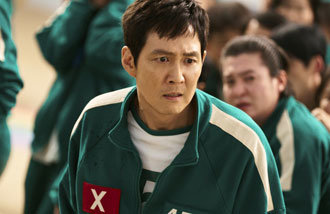South burning in drought: ‘water outage’ must be prevented
South burning in drought: ‘water outage’ must be prevented
Posted March. 03, 2023 07:38,
Updated March. 03, 2023 07:38
Juam Dam in Suncheon, South Jeolla Province, the largest multi-purpose dam in the Honam region, is the lifeline that feeds Gwangju and South Jeolla Province. It is a source of drinking water for 11 cities and counties in South Jeolla Province, including Gwangju, Goheung, Naju, and Mokpo, and a source of industrial water for Yeosu National Industrial Complex, the largest petrochemical complex in Korea, and Gwangyang National Industrial Complex, where steel companies gather. Juam Dam, a tourist attraction thanks to its beautiful scenery and Songgwangsa Temple, is drying up due to the worst drought in 50 years.
In the upper reaches of Juam Dam, where blue streams used to gush out beautifully, only the dirt floor with cracks can be found these days. The water surface area of the Juam Dam basin has shrunk by the size of 678 soccer fields in just two years. The reservoir levels of Juam Dam and nearby Jangheung Dam and Seomjin River Dam are less than half of the previous years. Locals who braced for the COVID-19 pandemic are now agonizing over the “emergency texts” announcing reservoir levels. By dropping the water pressure in the apartment, only a small amount of water comes out, and the residents' associations share the prepared bricks to put in the toilet tank to save water. Large-scale factories in the Yeosu-Gwangyang industrial complex, such as POSCO, Hyundai Steel, LG Chem, and GS Caltex, are reducing water use by temporarily stopping or shutting down their operations entirely. All of these measures are to prevent the worst situation, 'water outage,' until the rainy season in June.
During last year's monsoon season, heat waves came to the southern regions instead of rain. The number of drought days in Gwangju and South Jeolla Province was 281.3, the longest since meteorological observations were made in 1973. Although it is a new year, there is no forecast for rain, making it far from relieving the drought. The drought has expanded to the Yeongnam region, including Busan and Daegu. The drought stage has been upgraded to "Attention" at the Hapcheon Dam in the Nakdong River basin, the Andong Dam, and the Yeongcheon Dam. This means that the reservoir levels are close to the lower cap of the normal water supply. Below the lower cap is "dead water," so unless it is purified at a huge cost, a water shortage crisis is expected to occur where even drinking water will be scarce. Without water, the Yeosu-Gwangyang Industrial Complex would inevitably suffer hundreds of billions of won in damage every day. For this reason, water use should be minimized, and the duration to reach the lower cap should be delayed as much as possible by drawing water from other dams with higher reservoir levels.
In the past, droughts occurred nationwide every five to seven years, but since about a decade ago, localized droughts have occurred every year. Climate change is causing the worst drought in history not only on the Korean Peninsula but also in other parts of the world, including China, France, and Italy. And in the future, extreme droughts are expected to happen more frequently and in more places. Even if it is not climate change, the water shortage problem is becoming chronic due to urbanization and industrialization. Under these circumstances, measures to reduce demand, such as water-saving subsidies, should be implemented, and alternative water resources, such as reused sewage and wastewater and seawater desalination, should be implemented in a timely manner.







